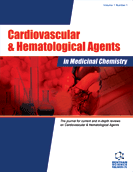Abstract
Edoxaban is a factor Xa inhibitor that is approved for prevention of stroke in individuals with atrial fibrillation and treatment of venous thromboembolic disease at once daily 60 mg dose for individuals with normal renal function. A decrease of dose to 30 mg is recommended for those with moderate renal insufficiency, weight ≤ 60 kg or simultaneous administration of strong P-glycoprotein inhibitors. At this time, it is not recommended for use in persons with either end stage renal disease or with GFR exceeding 95 mL/min. Shorter half-life averaging 8-10 hours may translate into a safer profile. With a fast onset of action of ~1.5 hours and relatively high bioavailability, edoxaban is an alternative for patients who may not be good candidates for warfarin therapy due to multiple limitations that vitamin K anticoagulation entails. No clear benefits of edoxaban have been reported to date compared to the other available factor Xa inhibitors.
Keywords: Edoxaban, oral anticoagulation, pharmacodynamics, pharmacokinetics.
Graphical Abstract
Cardiovascular & Hematological Agents in Medicinal Chemistry
Title:Clinical Pharmacology and Role of Edoxaban in Contemporary Antithrombotic Therapy
Volume: 13 Issue: 2
Author(s): Maryna Popp Switzer, Priyanka Wani, Sucheta Gosavi and Debabrata Mukherjee
Affiliation:
Keywords: Edoxaban, oral anticoagulation, pharmacodynamics, pharmacokinetics.
Abstract: Edoxaban is a factor Xa inhibitor that is approved for prevention of stroke in individuals with atrial fibrillation and treatment of venous thromboembolic disease at once daily 60 mg dose for individuals with normal renal function. A decrease of dose to 30 mg is recommended for those with moderate renal insufficiency, weight ≤ 60 kg or simultaneous administration of strong P-glycoprotein inhibitors. At this time, it is not recommended for use in persons with either end stage renal disease or with GFR exceeding 95 mL/min. Shorter half-life averaging 8-10 hours may translate into a safer profile. With a fast onset of action of ~1.5 hours and relatively high bioavailability, edoxaban is an alternative for patients who may not be good candidates for warfarin therapy due to multiple limitations that vitamin K anticoagulation entails. No clear benefits of edoxaban have been reported to date compared to the other available factor Xa inhibitors.
Export Options
About this article
Cite this article as:
Switzer Popp Maryna, Wani Priyanka, Gosavi Sucheta and Mukherjee Debabrata, Clinical Pharmacology and Role of Edoxaban in Contemporary Antithrombotic Therapy, Cardiovascular & Hematological Agents in Medicinal Chemistry 2015; 13 (2) . https://dx.doi.org/10.2174/187152571302151217130638
| DOI https://dx.doi.org/10.2174/187152571302151217130638 |
Print ISSN 1871-5257 |
| Publisher Name Bentham Science Publisher |
Online ISSN 1875-6182 |
 38
38 2
2
- Author Guidelines
- Bentham Author Support Services (BASS)
- Graphical Abstracts
- Fabricating and Stating False Information
- Research Misconduct
- Post Publication Discussions and Corrections
- Publishing Ethics and Rectitude
- Increase Visibility of Your Article
- Archiving Policies
- Peer Review Workflow
- Order Your Article Before Print
- Promote Your Article
- Manuscript Transfer Facility
- Editorial Policies
- Allegations from Whistleblowers
Related Articles
-
Endothelial Function Assessment in Complicated Hypertension
Current Pharmaceutical Design TGF-β in Epithelial to Mesenchymal Transition and Metastasis of Liver Carcinoma
Current Pharmaceutical Design Gene Electrotransfer: A Mechanistic Perspective
Current Gene Therapy Effect of Direct-Acting Antiviral Drugs on Erectile Functions among Hepatitis C Patients: A Prospective Interventional Study
Endocrine, Metabolic & Immune Disorders - Drug Targets Correlation between Serum 25 hydroxy vitamin D level and plasminogen activator inhibitor 1 in type 2 diabetic patients
Endocrine, Metabolic & Immune Disorders - Drug Targets Anatomical Approach to Clinical Problems of Popliteal Fossa
Current Rheumatology Reviews Vasculogenic and Angiogenic Pathways in Moyamoya Disease
Current Medicinal Chemistry Endogenous and Exogenous Ligands of Aryl Hydrocarbon Receptor: Current State of Art
Current Drug Metabolism Disturbance of Inorganic Phosphate Metabolism in Diabetes Mellitus: Its Impact on the Development of Diabetic Late Complications
Current Diabetes Reviews CHF5074 Reduces Biomarkers of Neuroinflammation in Patients with Mild Cognitive Impairment: A 12-Week, Double-Blind, Placebo- Controlled Study
Current Alzheimer Research A Dig Deep to Scout the Pharmacological and Clinical Facet of Garlic (<i>Allium sativum</i>)
Current Traditional Medicine Current Status of Pharmacological Thrombolytic Therapy and Mechanical Thrombectomy for the Treatment of Acute Deep Venous Thrombosis
Cardiovascular & Hematological Agents in Medicinal Chemistry Rutin-Phospholipid Complex: An Innovative Technique in Novel Drug Delivery System- NDDS
Current Drug Delivery Multimodality Imaging in Acute Ischemic Stroke
Current Medical Imaging Impact of GLP-1 and GLP-1 Receptor Agonists on Cardiovascular Risk Factors in Type 2 Diabetes
Current Diabetes Reviews Respiratory Hypoxia and Oxidative Stress in the Brain. Is the Endogenous Erythropoietin an Antioxidant?
Current Chemical Biology Prevention of Cell Damage in Ischaemic-Reperfusion: Mitochondrial Respiratory Chain as a Pharmacological Target
Letters in Drug Design & Discovery Epidemiology and Risk Factors of Cerebral Ischemia and Ischemic Heart Diseases: Similarities and Differences
Current Cardiology Reviews A Historical Overview on Coronary Surgery and Interventional Cardiology: Parallel Pathways?
Vascular Disease Prevention (Discontinued) Chronic Complications of Diabetes Mellitus: A Mini Review
Current Diabetes Reviews


























